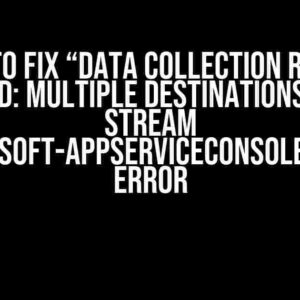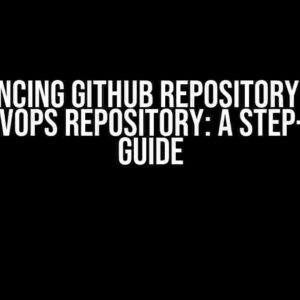Are you tired of grappling with inefficient resource allocation in your app service plan? Do you want to maximize your application’s performance while minimizing costs? Look no further! In this comprehensive guide, we’ll delve into the world of Premium P3V3 App Service Plan and explore the ins and outs of rules-based resource allocation. By the end of this article, you’ll be well-equipped to optimize your app’s performance and take your business to the next level.
What is Premium P3V3 App Service Plan?
The Premium P3V3 App Service Plan is a high-performance plan designed for applications that require scalable and reliable resources. This plan offers a range of features, including:
- High-performance instances with increased CPU, memory, and storage
- Auto-scaling to handle sudden spikes in traffic
- Load balancing to distribute traffic efficiently
- Advanced security features, including SSL/TLS encryption and access control
The Magic of Rules-Based Resource Allocation
One of the most significant benefits of the Premium P3V3 App Service Plan is its rules-based resource allocation feature. This innovative system allows you to define rules that automatically allocate resources based on your application’s specific needs. With rules-based resource allocation, you can:
Ensure that your application has the necessary resources to handle sudden spikes in traffic
Scale down resources during periods of low usage to reduce costs
Automatically allocate resources based on specific events or triggers
Understanding the Limitations of Rules-Based Resource Allocation
While rules-based resource allocation is an incredibly powerful feature, it’s essential to understand its limitations. One crucial aspect to keep in mind is that the Premium P3V3 App Service Plan has a hard limit of 10 instances for rules-based resource allocation. This means that:
You can only allocate up to 10 instances of resources at any given time
If you need to allocate more than 10 instances, you’ll need to upgrade to a more advanced plan or implement additional scaling strategies
Configuring Rules-Based Resource Allocation in Premium P3V3 App Service Plan
Now that we’ve covered the basics, let’s dive into the nitty-gritty of configuring rules-based resource allocation in Premium P3V3 App Service Plan. Follow these step-by-step instructions to get started:
Log in to your Azure portaland navigate to your App Service Plan- Click on the
Scale outtab and selectRules - Click on the
New rulebutton to create a new rule - Select the
Scale based on a scheduleoption to create a schedule-based rule - Configure the rule to allocate resources based on your specific needs (e.g., increased CPU during peak hours)
- Repeat steps 3-5 to create additional rules for different scenarios
rule {
metricTrigger {
metricName = "CpuPercentage"
metricNamespace = "Microsoft.Web/serverfarms"
metricResourceLocation = "*"
operator = "GreaterThan"
threshold = 70
timeAggregation = "Average"
timeGrain = "PT1M"
}
scaleAction {
direction = "Increase"
type = "ChangeCount"
value = 1
cooldown = "PT5M"
}
}
The above code snippet demonstrates a basic rule that scales up resources when CPU usage exceeds 70%. You can customize this rule to fit your specific needs and create multiple rules for different scenarios.
Tips and Best Practices for Optimizing Rules-Based Resource Allocation
To get the most out of rules-based resource allocation, follow these expert tips and best practices:
| Tips and Best Practices | Description |
|---|---|
| Define clear rules and triggers | Clearly define the rules and triggers that will allocate resources to ensure efficient resource utilization |
| Monitor and adjust rules regularly | Regularly monitor your application’s performance and adjust rules as needed to optimize resource allocation |
| Use a combination of rules and schedules | Use a combination of rules and schedules to create a robust resource allocation strategy that adapts to changing demands |
| Test and validate rules | Thoroughly test and validate rules to ensure they’re working as intended and not causing unintended consequences |
Conclusion
In conclusion, the Premium P3V3 App Service Plan’s rules-based resource allocation feature is a game-changer for applications that require scalable and reliable resources. By understanding the limitations and configuring rules-based resource allocation correctly, you can optimize your application’s performance and reduce costs. Remember to define clear rules, monitor and adjust regularly, use a combination of rules and schedules, and test and validate rules to get the most out of this powerful feature.
With the Premium P3V3 App Service Plan, you can unlock the full potential of your application and take your business to new heights. So what are you waiting for? Start optimizing your application’s resource allocation today and reap the benefits of this powerful feature!
Here are 5 FAQs about Premium P3V3 App Service Plan – rules based resource allocation does not go more than 10 instances:
Frequently Asked Question
Get answers to your questions about Premium P3V3 App Service Plan and its rules-based resource allocation limitations!
Why does the Premium P3V3 App Service Plan limit resource allocation to 10 instances?
The Premium P3V3 App Service Plan is designed to provide a balance between performance and cost. By limiting resource allocation to 10 instances, we ensure that the plan remains affordable while still providing ample capacity for most applications. Additionally, this limit helps prevent over-provisioning and encourages efficient resource utilization.
Can I increase the instance limit for my Premium P3V3 App Service Plan?
Unfortunately, the 10-instance limit is a hard limit for the Premium P3V3 App Service Plan. However, you can consider upgrading to a higher-tier plan, such as the Isolated plan, which offers more flexible scaling options. Alternatively, you can optimize your application’s resource utilization to maximize performance within the existing instance limit.
How do I ensure my application performs well within the 10-instance limit?
To ensure your application performs well within the 10-instance limit, focus on optimizing resource utilization and right-sizing your instances. Use scaling rules to dynamically adjust instance counts based on demand, and consider using containers or serverless architectures to improve resource efficiency. Additionally, monitor your application’s performance and adjust instance sizes or configurations as needed.
Can I use automation to scale my Premium P3V3 App Service Plan instances?
Yes, you can use automation to scale your Premium P3V3 App Service Plan instances within the 10-instance limit. Azure provides built-in scaling rules that allow you to automate instance scaling based on CPU usage, memory usage, or other metrics. You can also use Azure Automation or third-party tools to create custom scaling scripts and workflows.
What happens if my application exceeds the 10-instance limit?
If your application attempts to scale beyond the 10-instance limit, the scaling operation will be blocked, and your application may experience performance degradation. To avoid this, ensure you have implemented scaling rules and resource utilization monitoring to prevent over-scaling. If you consistently require more than 10 instances, consider upgrading to a higher-tier plan or optimizing your application’s resource efficiency.







